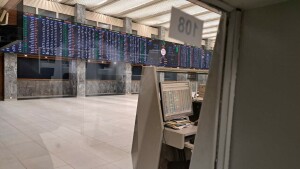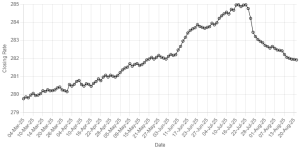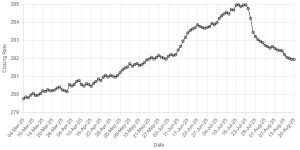 TOKYO: Japanese bond yields soared to a 1-1/2 year high on Wednesday, as investors tested the limits of the central bank's new commitment to allow debt markets to move more freely, a day after it announced tweaks to its massive stimulus programme.
TOKYO: Japanese bond yields soared to a 1-1/2 year high on Wednesday, as investors tested the limits of the central bank's new commitment to allow debt markets to move more freely, a day after it announced tweaks to its massive stimulus programme.
Government bond prices reversed the previous day's sharp gains, which came after the central bank pledged to keep interest rates low for an extended period, eliminiating earlier specualtion that it might shift to a much tighter monetary setting.
While yields spiked on Wednesday, they stopped well short of the upper limit of the central bank's new tolerance range, a sign investors remain cautious about the possibility of central bank intervention.
The BOJ's policy changes this week effectively allow market interest rates to rise further than they did before, but the tweaks are modest when compared with other central banks, which are moving quickly away from crisis-era easy settings.
"People are selling but very timidly, worrying when the BOJ may intervene," said Jun Fukashiro, head of global strategy investment at Sumitomo Mitsui Asset Management.
"But I think the market will keep testing higher yields until the BOJ will eventually come in."
The benchmark 10-year Japanese government bond yield jumped 7.5 basis points to 0.120 percent, hitting the highest level since February 2017.
Despite the rise in yields, the Japanese yen remained weak at 112.13 yen per dollar, near this year's low of 113.18 marked last month, on the expectations interest rates in markets such as the United States and Europe would move higher and faster over the long-term.
BOJ Governor Haruhiko Kuroda said on Tuesday the central bank would tolerate moves in the 10-year JGB yield of around 20 basis points from its policy target of zero percent, wider than the 10 basis point range allowed previously.
Traders quickly took the opportunity to test the more liberal market framework by selling JGBs, which have long been propped up -- and controlled -- by the BOJ's massive buying programme.
The 10-year JGB futures fell 0.83 points, the biggest drop since the BOJ introduced the current "yield curve control" (YCC) policy, under which it aims to control not just short-term interest rates but also the 10-year bond yield.
The success of the BOJ's efforts to control the 10-year yields means there have been days in recent months when the benchmark 10-year JGB was not traded at all, part of the central bank's reasons for allowing more flexible trading.
Despite the BOJ's shift, investors remain cautious with the 10-year yield in mostly uncharted territory under the YCC and still far below the 0.20 percent limit flagged by Kuroda on Tuesday.
"I would think the 10-year yield will in the end settle around or below 0.15 percent, although there could be occasions where the yield may test 0.20 percent," said Koichi Sugisaki, strategist at Morgan Stanley.
Also slowing Wednesday's selloff was the covering of heavy short positions many traders made before the policy announcement in anticipation of some relaxation of its control on the bond yield.
On Monday, to stem rising yields, the BOJ conducted an unlimited buying in 10-year JGBs, sucking up 1.64 trillion yen of JGBs from the market, aggravating the shortage of available bonds in the market.
"That is four times the amount the BOJ usually buys through regular operations. So there are a lot of short-covering needs around 0.1 percent in the 10-year yield," said Yusuke Ikawa, strategist at BNP Paribas.
Indeed, the BOJ had to lend 1.36 trillion yen of JGBs, including almost 800 billion yen of the benchmark 10-year JGBs, to short sellers on Tuesday.
The BOJ's bond-lending dropped slightly on Wednesday but still stood at 1.1 trillion yen, well above less than 100 billion usually.
The central bank's still hefty presence in the bond market and its commitment to low rates puts it at odds with its major counterparts, which are looking to raise interest rates, putting pressure on the yen.
The Federal Reserve is expected to hint at two more rate hikes this year at its policy announcement later on Wednesday while the Bank of England is expected to raise rates on Thursday for a second time in less than a year.
The Reserve Bank of India raised its benchmark rate on Wednesday as inflation pressures build and the European Central Bank has also indicated it would raise rates in late 2019.
Japanese shares rose 0.9 percent on Wednesday thanks mainly to positive earnings and as the BOJ did not change its ETF buying target of six trillion yen a year.























Comments
Comments are closed.